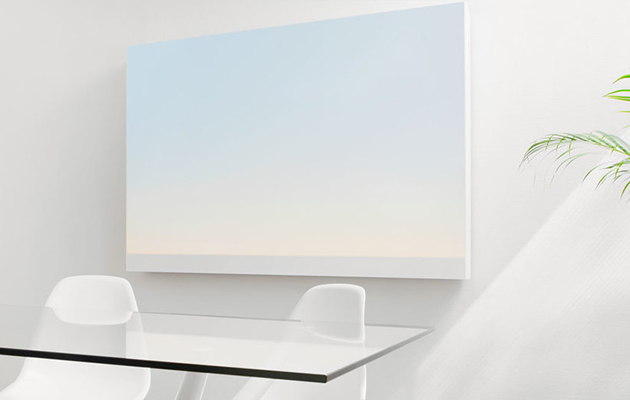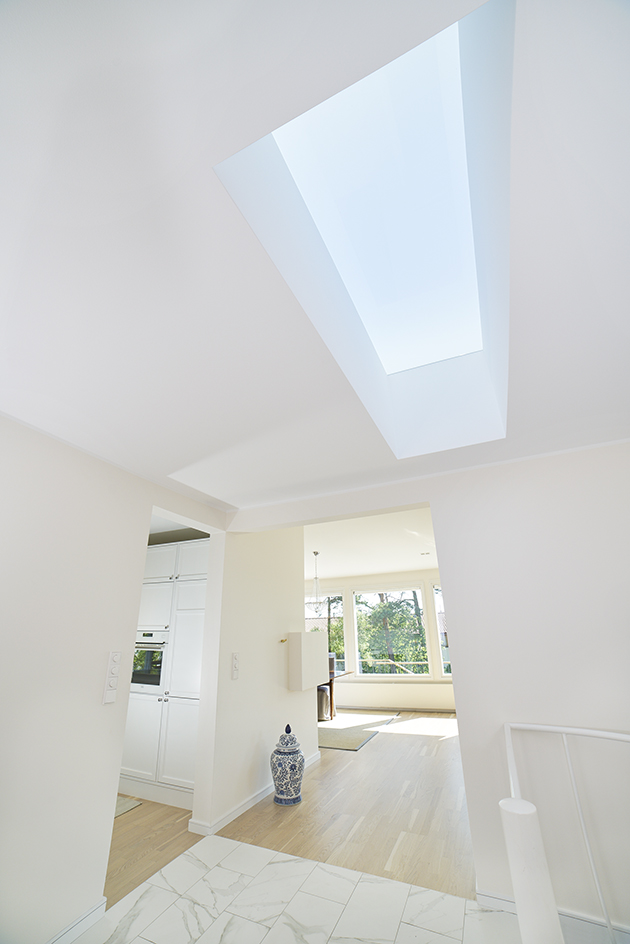 Light Cognitive’s systems’s are designed to mimic outdoor lighting
Light Cognitive’s systems’s are designed to mimic outdoor lighting
Conventional indoor lighting may provide light that enables us to extend our days ways that were unimaginable before Edison’s light bulb, but it has been shown that it is by no means a substitute for daylight. Anna Iversen, from Fjör Life, investigates what lighting for wellbeing should look like
We’ve got it so wrong. We spend on average 90 percent of our time indoors, we have obsessively been focusing on the harmful effect of the sun’s UVA rays and as a result we either avoid the sun completely or slap on sunscreen laden with chemicals that wreak havoc on our bodies and stop us from synthesising vitamin D. On top of it all, we have been focusing so much on energy saving, which is, of course, good, but has the unintended consequence of having a potentially devastating effect on our health.
There is a mounting pool of scientific evidence indicating that exposure to bright light rich in blue hues during the day, and to softer, amber hues at night, helps maintain the body’s natural circadian rhythm, which experts argue, has been disrupted to by our constant exposure to standard indoor lighting sources and worse still, our more recent incessant obsession with the blue light emitting screens of our computers, tablets and smartphones.

This has given birth to a whole new genre of lighting – circadian lighting or human-centric lighting – which is starting to gain ground in offices, classrooms, hospitals, care homes as well as private homes.
The timing is right, with the 2017 Nobel Prize in Physiology or Medicine being given to the three physicists who mapped out the mechanisms that control our internal body clock and how light plays a pivotal role in this process. Their work confirms that when we are exposed to natural light, our internal body clocks are in symphony with nature, telling us when to feel alert, hungry and sleepy throughout the day.
Too little light from the blue end of the visible spectrum during the day, or conversely too much of it at night, may cause the body’s circadian clock to get out of synch, potentially resulting in some serious health consequences, starting with poor sleep, lack of concentration and moods swings, but long-term resulting in chronic disease, ranging from type 2 diabetes, to obesity, heart disease and ultimately cancer.
One emerging lighting manufacturer is Light Cognitive from Finland which came into being specifically to address the problems associated with the long, dark Finnish winters. The challenge lies in that windows often do not bring enough daylight indoors because of long nights or overcast weather conditions. In central parts of buildings, the effect of daylight is too small to achieve a positive biological impact.
In the absence of natural light, an electric light should imitate it. Like a window or skylight, these units allow people to enjoy long clear days even when the real days are short or cloudy. They create healthier environments in offices, places of hospitality or homes.
Conventional indoor lighting may provide light that enables us to extend our days and be productive in ways that were unimaginable before Edison’s light bulb changed the world, but it has been shown that it is by no means a substitute for daylight. A light may make it possible for us to see what we are doing, but it is unlikely to give our body the right signals, telling us what time of day it is.
The solutions that we are emerging now are likely to provide only part of the answer, but this should not stop us from using these technologies. This is reflected in the International WELL Building Institute’s WELL Building certification system which recognises circadian lighting as making a significant contribution to their certification. The certification system was established to “advance buildings that help people work, live, perform, and feel their best”.
It is also worth noting that human-centric lighting has been installed on the International Space Station, based on the advice of Steven Lockley, to promote better sleep, alertness, and circadian adaptation. The space agencies are not waiting for a perfect solution. Why should we?
Anna Iversen is the founder of Fjör Life, a wellness and health company, which has partnered with Light Cognitive to bring health-promoting light to the UK

















